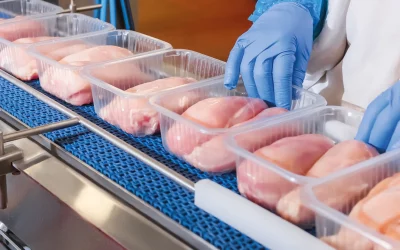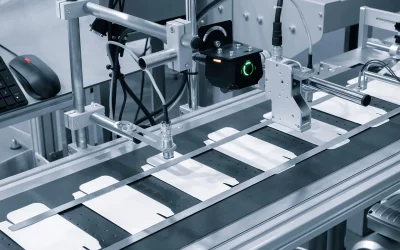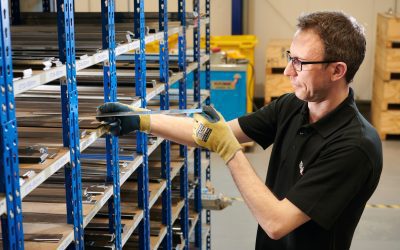Safety in the COVID-19 age
Perhaps the most important trend, and one that’ll have the biggest impact on your operations and underlying profitability, will be the ongoing battle against COVID-19.
Despite widespread and high rates of vaccination across the Western Hemisphere, COVID-19 and its innumerable variants continue to pose a threat to public health. As such, restrictions on many aspects of day-to-day life are expected to continue.
But, with restrictions, come supply chain issues, additional compliance burdens and more.
If you’re running a food processing plant – be it in the meat, snack foods, bakery, seafood and fish, fruit and veg, or dairy sectors – expect to see things such as physical inspections becoming more frequent in 2022.
In addition, should the UK Government reintroduce more stringent track and trace and isolation requirements, this could have a material impact upon your workforce and overall capacity to deliver on agreed upon contracts.
The end of just-in-time supply chains?
For decades, the just-in-time supply chain model has been a mainstay of the food production industry.
However, due to the massive disruptions wrought by international responses to the COVID-19 pandemic, the just-in-time supply chain model has been too brittle and vulnerable to disruption – as empty shelves in supermarkets across the UK (and elsewhere) have attested.
In search of a more robust, stable supply chain system, food production companies are increasingly turning to ‘just-in-case’ models.
However, shifting to a just-in-case supply chain model is not without its challenges. It involves fundamental changes to the way you work with suppliers and customers for one thing.
It also involves keeping large inventories on hand, which can result in higher storage costs and the risk of wasted inventory. However, in today’s turbulent world, many food processors are deciding that just-in-case is worth it.
Greater automation
Labour costs remain one of the biggest challenges for food producers, and this isn’t expected to change in 2022.
What is likely to change however, is the use of automation.
With inflationary pressures increasing as a result of COVID-19 lockdowns and other related issues, expect to see food processors of all stripes embracing automation as a means of reducing wage costs and improving their operational profitability.
In addition to ameliorating higher labour costs, automation also has the benefit of addressing worsening worker shortages. In the UK Brexit continues to play a role in depriving food processors of necessary labour.
But it’s not an issue that’s confined to the UK. Labour shortages are hurting food production companies globally. In Canada, for example, the food manufacturing sector is predicting a 25% gap between available workers and the demand for workers by 2025.
In other words, it’s a problem that’s not going to go away anytime soon. So, expect to see greater automation across the industry in 2022.
Changing consumer habits: plant-based foods
In news that may not be particularly welcomed by meat and dairy processors, plant-based alternatives are expected to see tremendous growth in 2022.
According to a study in Science of the Total Environment, UK consumers already report doubling their consumption of plant-based milk, vegan sausages and vegetable burgers between 2017 and 2019.
This growth is expected to accelerate, with the plant-based alternatives market expected to be worth £122 billion by 2030, from a figure of £22.19 billion in 2020.
This all adds up to a situation where food production companies will need to potentially reassess their product mix, explore diversification and of course look at retooling and adaptation within their production facilities.
From fresh to processed: the great consumer switch
The COVID-19 pandemic has brought about another significant shift in consumer behaviour; the switch from fresh to processed foods.
Since the lockdowns of 2020/21, 40% of consumers are shopping less compared to pre-pandemic, according to a study by consumer finance research company LendingTree. As such, consumers are choosing to buy processed items that’ll last longer compared to fresh alternatives.
Plus, faced with shortages or stock-outs of fresh items, around 28% of consumers will switch to frozen or processed alternatives.
The switch to processed food is a trend which has also been exacerbated by supply-chain shortages. With consumers confronted by empty supermarket shelves, many have taken the decision to stock-up on longer-lasting processed, tinned and frozen foodstuffs.
How this will affect food processors will very much depend on which vertical they operate in, but if your particular business is oriented towards fresh produce then this is a trend which you should at very least monitor closely.
Packaging information: food label transparency
Six in 10 consumers want to know where their food comes from (according to a study by Innova). With this being only one of many similar stats, it’s clear that food label transparency will be a key trend through 2022.
As such, food processors will find themselves under increasing consumer pressure and scrutiny to provide clean and clear product packaging that includes information on animal welfare, provenance, sustainability information, ingredients and more.
Getting food labelling transparency right will be a key determinant in product desirability in the year ahead.
Tip – stay ahead of the curve on packaging trends with our guide: Packaging Sustainability Trends for the Food Industry.
Sustainability
Whilst sustainability seems like a perennial food industry trend, it’s certainly not going to go away in 2022.
Managing your operations in a sustainable and environmentally friendly way is going to be a key business goal in 2022. Not only are consumers expecting their food producers to be operating in a green way with a low carbon footprint, but legislators and government bodies are too.
Shifting away from OEM dependence
For many food production companies, there hasn’t previously been a viable alternative for replacement machine knives and blades from OEMs.
However, thanks to companies such as MRMK, it’s now possible to break those OEM shackles and buy food processing blades that are more cost-effective, offer superior performance and which will last thousands of cycles with no decline in cut quality.
If you’re looking to reduce your operational costs in 2022 (and with rising inflation, increased raw material and labour costs, who isn’t?!), whilst maintaining machine operability and performance, then consider shifting away from OEM replacement blades and choosing ones from a company such as MRMK.
Speak to MRMK about your machine knife and blade requirements today
For the latest production trends and machine knife and blade news and developments, explore the MRMK news and insights hub…
When to Replace Your Industrial Machine Blades | The Ultimate Guide to Blade Coatings and Their Benefits | Packaging Sustainability Trends for the Food Industry



